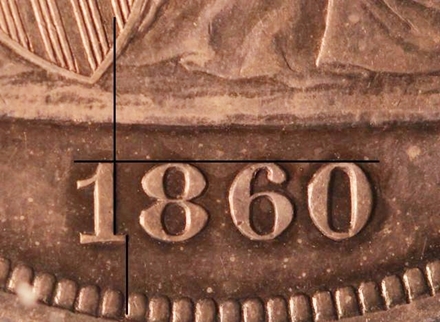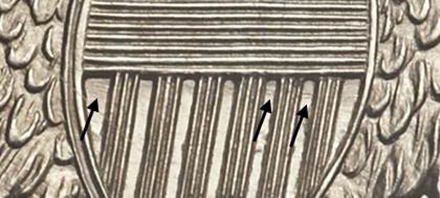|
|
Comments: This is the second of two uses of Obverse P1 and the second of two uses of Reverse PA. Both dies were first used to strike 1860 proofs. |
Obverse P1 The photo below shows Obverse P1 attribution grid. Obverse P1 exhibits no significant die markers, but the date position should be adequate for definitive attribution.  1860 Obverse P1 attribution grid
|
Reverse PA exhibits light die lines in the upper shield recesses, shown in the following photo. These lines are light, and may be hard to see, particularly on the OC-6 business strikes. The die was polished after the proofs were struck, significantly diminishing the definition of the die lines. The die line at the top of shield recess #6 is the most visible after the polishing.  1860 Reverse PA die lines in shield
We’ve found no conclusive method for separating proofs from business strikes. It’s a judgement call based on surfaces and strike characteristics. |
| Photo credits:
Obverse P1: 1860 PCGS PR55, from the Osburn-Cushing reference collection. Reverse PA: 1860 PCGS PR62 CAC OGH, from the Heritage archives. |
